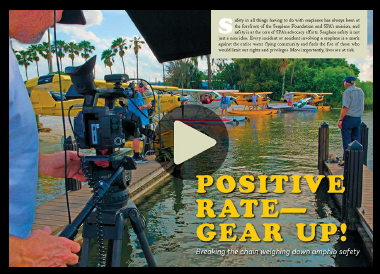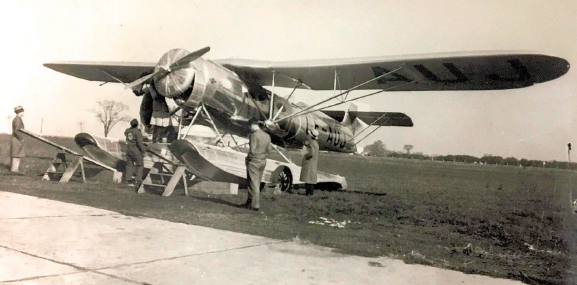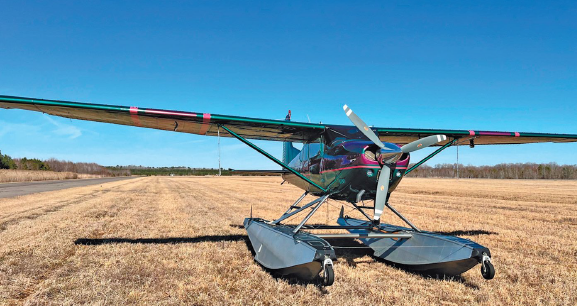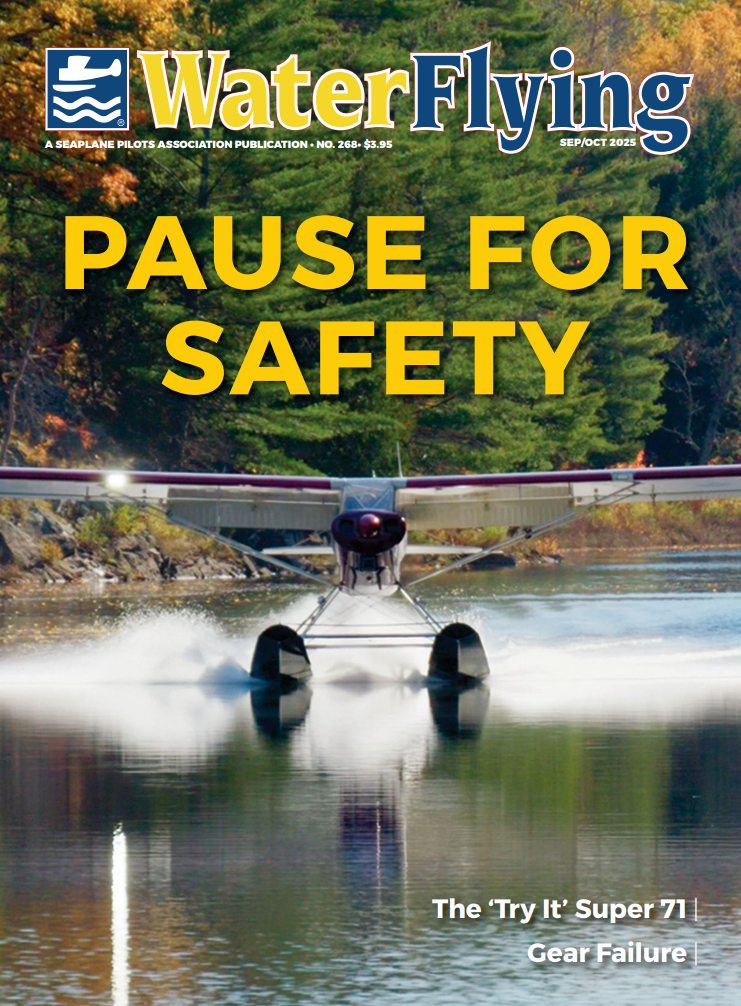Current Issue
The only full color magazine dedicated to covering the seaplane community around the world for seaplanes and their pilots.

TAKE A PAUSE FOR SAFETY
Do you devote any time at all to specifically focus on aviation safety? If not, the Seaplane Pilots Association, the Seaplane Foundation, AOPA, EAA and a host of other aviation organizations are urging you to spend a modest 15 to 60 minutes in the next six months studying one or more of three-dozen safety videos, articles and more at a new website, www.GAsafe.org.

THE 'TRY IT' SUPER 71
The Fairchild Super 71 represented an ambitious “Try it!” attitude as the first aircraft designed for remote regions. Unfortunately, a litany of design and power issues, and the arrival of the sturdy and capable Noorduyn Norsemen, meant the 71 never achieved commercial success and was destined for an afterlife as a museum oddity.

GEAR FAILURE
Turning base leg in his Cessna 185F on Wipline amphibs, the author completed his landing checks, then glanced down to verify four green down-and locked indicator lights. He was surprised to instead see three green lights and one blue light; the right main was the outlier. Thus began a complicated process of determining how and where to land, and how to sort out the mystery of the recalcitrant gear.
Seaplane pilots and non-pilots that are fans of seaplanes, if you are not getting Water Flying magazine you are missing out on the only full color magazine dedicated to covering the entire seaplane community from Alaska to Florida from Australia to Lake Como, Italy and all points in between.
While most of the readers of Water Flying are seaplane rated pilots, an ever increasing number of non-pilot fans of seaplanes are receiving the magazine by joining the Seaplane Pilots Association.
Inside you will find:
- The latest news and events going on in the Water Flying community
- The latest challenges to seaplane access, and the Seaplane Pilots Associations latest advocacy efforts to protect and promote Water Flying
- Highly informative instructional articles on seaplane techniques, tips & tricks
- Lifestyle articles on travel and adventures that our members are taking in their seaplanes.
- And so much more.

